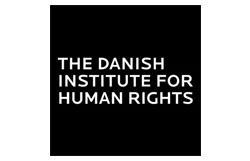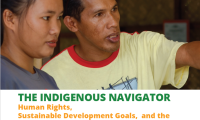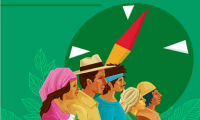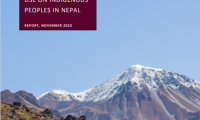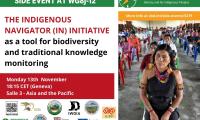Bringing on board National Human Rights Institutions
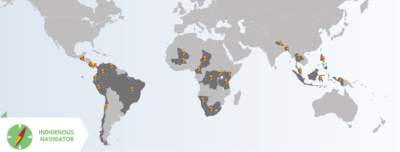
Today, there are more than 100 national human rights institutions around the world. Just last year, the Danish Institute for Human Rights (DIHR), a global partner, trained 27 of them on how they can effectively use their mandate to promote and protect the rights of indigenous peoples.
Why engage National Human Rights Institutions?
National Human Rights Institutions (NHRIs) monitor and report on the human rights situation in each country, they advise parliaments and governments on legislative issues, deal with complaints from citizens whose rights have been violated, train police, judges, teachers and others in human rights standards, provide public information, serve as a national intermediary between state and society, and they act as bridges between the international human rights system and national stakeholders.
Given the key role NHRIs play, the Navigator Initiative designed an action that includes them in achieving the SDGs for indigenous peoples. The surveys developed by the DIHR, directly address the need for quality data that can be fed into existing human rights and sustainable development monitoring processes at local, national, regional and international levels. Then, through the tools and data, in 2018 the Danish Institute for Human Rights provided 27 NHRIs with capacity development in order to ensure that they can fulfill their mandate.
“We hope that our NHRI colleagues will return to their home countries with new inspiration, and greater knowledge of how to engage with international human rights mechanisms in the promotion and protection of indigenous peoples’ rights”, says Sille Stidsen, Senior Advisor at the Danish Institute for Human Rights.
Regional workshops for effective engagement
In 2018, the Danish Institute for Human Rights conducted several regional training sessions in Asia, Latin America and Africa with very positive feedback. The workshops were used as a space to introduce the Indigenous Navigator framework and tools, and allowed participants to try some of them hands-on.
During the training, the conceptual architecture behind the Indigenous Navigator monitoring framework was described in detail, and the potential to apply the tools in the context of national SDG planning and monitoring was discussed.
Scaling-up a conversation to a global level
During the summer, 18 national human rights institutions were invited to Geneva for a three-day workshop program to further strengthen their engagement with indigenous peoples as well as strengthening dialogue between them and international and regional legal mechanisms. From July 10 to 12, the participating NHRIs met directly with representatives from EMRIP, OHCHR, and ILO.
The side event took place during 11th EMRIP and presented the tools and data on indigenous peoples’ rights and development. It also highlighted the NHRI experiences and good practices in the promotion and protection of indigenous peoples’ rights.
Both the regional reach and the discussions in Geneva have shown a great appetite for understanding and mastering these tools to make the SDGs a reality for indigenous peoples.
